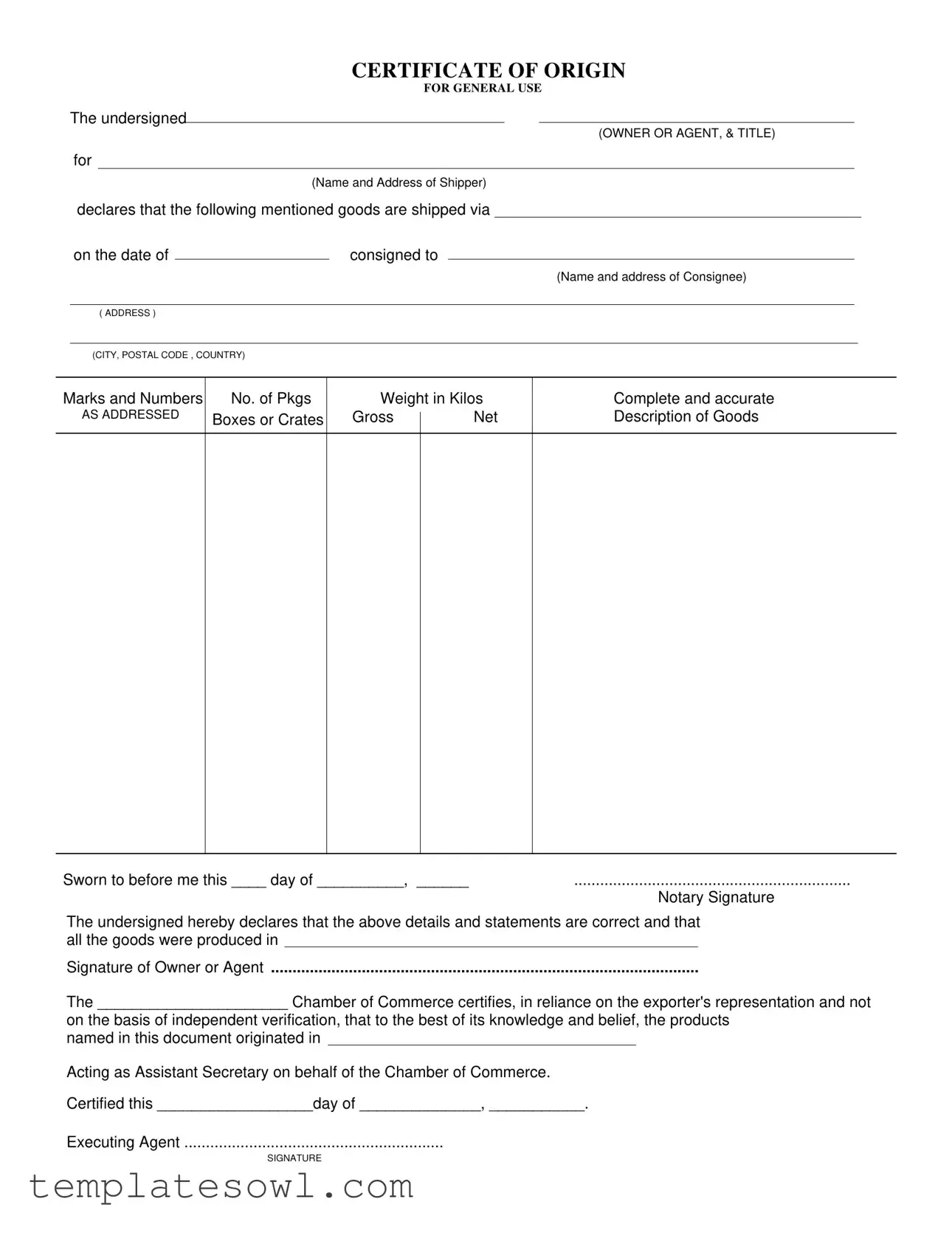What is a Certificate Of Origin?
A Certificate Of Origin is an official document that confirms the country in which the goods were manufactured or produced. This document plays a crucial role in international trade, as it helps importers and exporters comply with regulations and trade agreements. It often accompanies shipments and is required by customs authorities in the destination country.
Who needs to complete a Certificate Of Origin?
The Certificate Of Origin must be filled out by the shipper or their authorized agent. The shipper is typically the entity sending the goods, while the agent acts on their behalf. Both individuals need to provide accurate information regarding the goods being shipped. This ensures that the Certificate is legally valid and properly processed by customs.
What information is included on a Certificate Of Origin?
This document includes several key details such as the name and address of the shipper, the consignee, a complete description of the goods being shipped, the number of packages, and weight specifications. It also requires signatures from the shipper and, in some cases, a notary public to confirm the details provided. Each piece of information is vital to ensure the certificate's validity and facilitate smooth customs processing.
Is there a standard form for the Certificate Of Origin?
While there are various forms available, a general format is widely used, which includes sections for all the required information and an area for certification by the Chamber of Commerce. Depending on the country and specific trade agreements, the exact form may vary, but the fundamental purpose remains the same: to certify the origin of the goods.
Why is a Certificate Of Origin important?
This document is important for several reasons. It helps in determining tariff rates and is often a requirement for importing goods into different countries. Without it, shipments can face delays, additional inspections, or even fines. For exporters, a Certificate Of Origin can enhance their credibility and marketability in international trade.
How does one obtain a Certificate Of Origin?
To obtain a Certificate Of Origin, the shipper should fill out the necessary form accurately. After the form is completed and signed, it typically needs to be submitted to a local Chamber of Commerce or other authorized entity for certification. Some companies may provide assistance in obtaining this certificate, especially for businesses that frequently engage in international shipping.
How long does it take to process a Certificate Of Origin?
The processing time can vary depending on the local Chamber of Commerce or the entity involved. Generally, once the form is submitted with all required information, it can be certified within a few business days. However, it's advisable to factor in extra time if there may be complications or if your shipment is time-sensitive.

